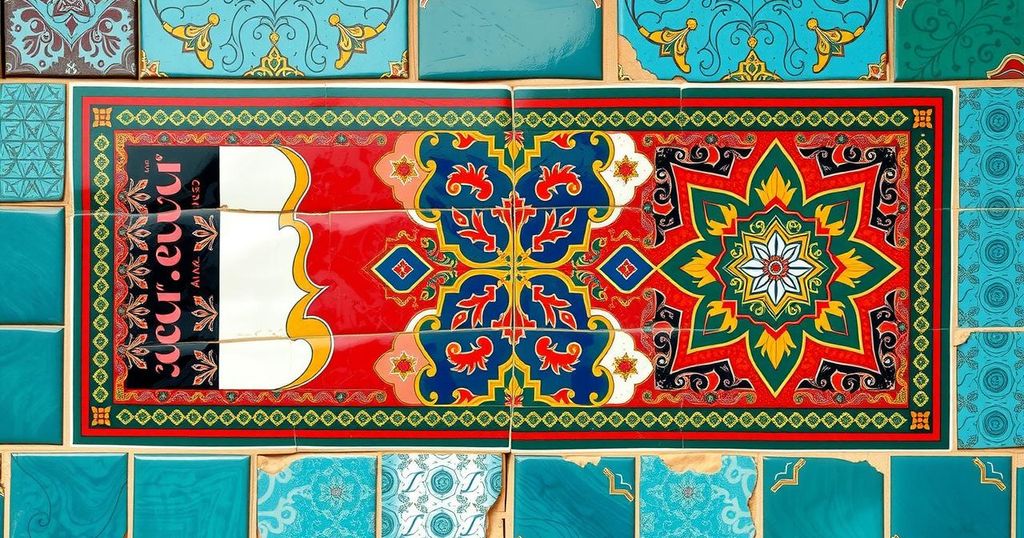Moroccan artist Aicha Abouhaj presents her artwork “Hikayat,” celebrating the interconnected cultural heritage of Qatar and Morocco. The piece explores the significance of women’s narratives through endangered artistic traditions. By merging elements of Qatari Sadu weaving and Moroccan Amazigh tattoos, Abouhaj honors the legacy of storytelling and highlights the essential role of art in preserving cultural identity.
Aicha Abouhaj, a Moroccan artist, draws upon her cultural heritage for inspiration. Her recent artwork, “Hikayat,” emphasizes the vital connections between Qatar and Morocco. This piece not only serves as an artistic expression but also as a testament to the necessity of preserving cultural heritage through artistic endeavors.
The painting, measuring 100×80 cm and created with acrylic on canvas, commemorates the narratives passed down by women through ancient art forms. Abouhaj remarked, “Hikayat brings together the endangered traditions of Qatari Sadu weaving and Moroccan Amazigh tattoos, two practices that are passed down from mother to daughter and are facing the risk of disappearing.”
Each symbol in “Hikayat” narrates a woman’s life story, encapsulating her personal experiences, joys, and struggles. Abouhaj elucidates, “The intricate patterns of Sadu weaving, traditionally done by Qatari women, and the powerful symbols of the Amazigh tattoos, worn by Moroccan women, are deeply personal forms of expression.”
The artwork merges these two rich traditions into a unified representation, honoring the cultural legacy of women. Abouhaj stated, “The symbols are not just decorations; they are stories, memories, and emotions carried through generations. With this artwork, I want to celebrate the women who created these symbols and keep their legacies alive.”
Abouhaj’s intention with “Hikayat” is to highlight art’s role in the preservation of heritage and the transmission of stories to succeeding generations. She recently executed a live painting of “Hikayat” during the inauguration of the Gallery Five Home showroom at Giardino Mall in The Pearl.
Abouhaj’s collaboration with Qatari and Moroccan artists is exemplified in her participation in initiatives like the Qatar-Morocco 2024 Year of Culture. This included her work with Qatari artist Mubarak Al Thani on the Cubist Landscape project aimed at creating mural installations that symbolize the confluence of their cultures.
Reflecting on this collaborative effort, Abouhaj noted, “The project was all about collaboration. We shared ideas, learned from each other, and combined our traditions in a way that felt natural and meaningful. It was a celebration of the connections we have, not only as artists but as people who share a common cultural heritage.”
Through her varied artistic expressions, Aicha Abouhaj underscores the significance of conserving the cultural legacies of Morocco and Qatar, emphasizing that cultural heritage is not merely historical but continues to influence contemporary society.
Aicha Abouhaj’s artwork, “Hikayat,” serves as a powerful reminder of the importance of preserving cultural heritage and stories, particularly those of women. By intertwining Qatari and Moroccan traditions, she highlights the significance of collaborative artistic efforts in celebrating shared cultural identities. Abouhaj’s work emphasizes that heritage is a vital component of both individual and collective identities, warranting continued recognition and protection.
Original Source: thepeninsulaqatar.com






